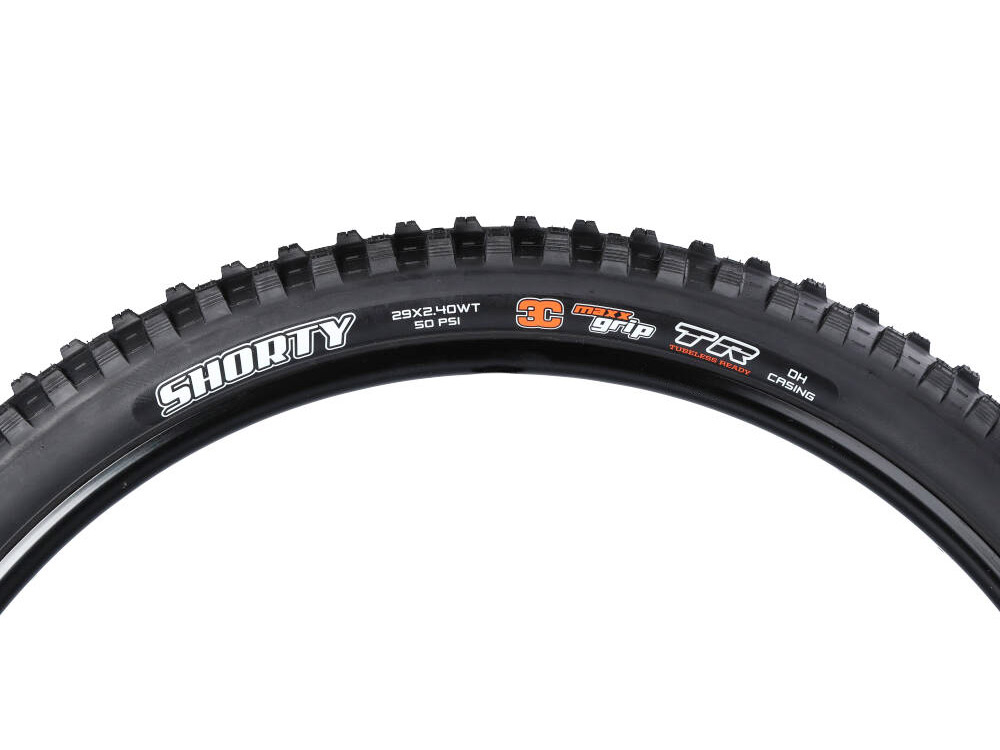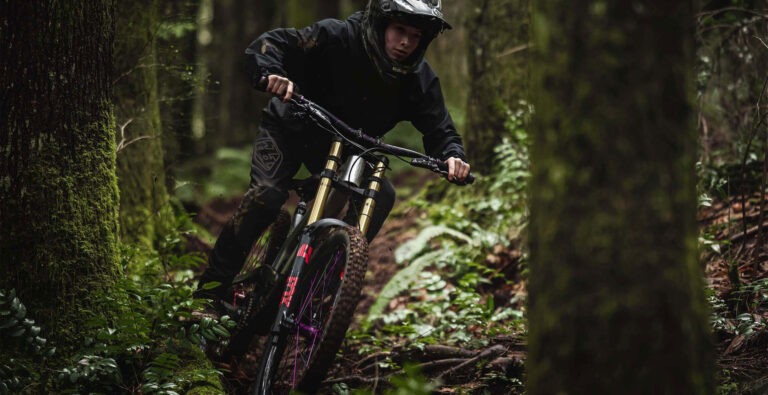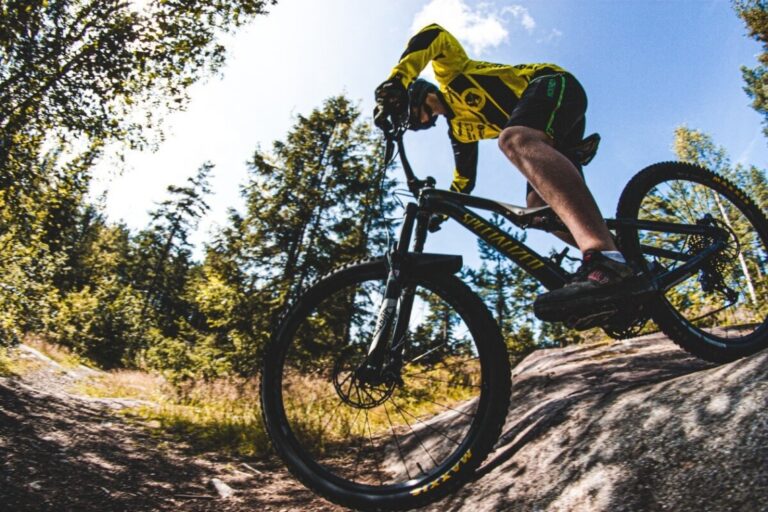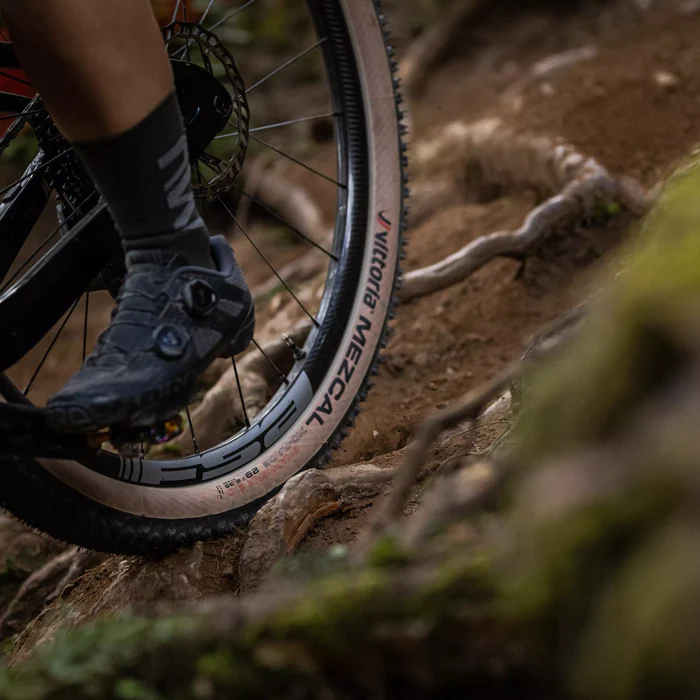Unlocking The Secrets: Mud Shedding Capabilities in Downhill Bike Tires

Key Point Summary of Mud Shedding Capabilities in Downhill Bike Tires:
- Mud Shedding Essentials: Downhill bike tires with effective mud shedding capabilities prevent mud buildup, maintaining traction and control.
- Design Features: Tires designed for mud shedding typically have wide spacing between knobs and special tread patterns to facilitate the release of mud.
- Material Matters: The rubber compound used in the tire can also affect its ability to shed mud, with some materials providing better mud release.
- Rider Strategies: Adjusting riding style and tire pressure can enhance the mud-shedding properties of downhill tires, improving performance in wet conditions.
In the exhilarating world of downhill mountain biking, where speed and precision navigate challenging terrains, the ability of a tire to shed mud effectively can be the difference between a podium finish and a slide-out. As a masters cyclist with a rich background in various biking disciplines, I’ve come to appreciate the critical role that tire choice plays in adapting to the unpredictable conditions often encountered on the trail, especially when it comes to mud.
The Critical Role of Mud Shedding
Downhill biking often involves wet and muddy conditions, where tires can quickly become caked with mud, leading to reduced traction and control. Tires with excellent mud shedding capabilities are designed to clear mud as they rotate, maintaining their grip and ensuring consistent performance. This feature is vital for downhill riding, where the margin for error is slim, and the demands on equipment are rigorous.

Design Innovations for Mud Management
Tire manufacturers have developed various design innovations to tackle the challenge of mud buildup. Key features include wide spacing between tread knobs, which helps to prevent mud from clinging to the tire, and specific knob shapes designed to eject mud efficiently as the tire spins. The depth and shape of the tread play a significant role in how well a tire can clear mud, with deeper, sharply-edged knobs often providing better mud release.
Material Influence
Beyond tread design, the rubber compound of a tire also influences its mud shedding capabilities. Softer compounds may offer better grip in wet conditions but can also allow mud to stick more readily. Conversely, harder compounds might not grip as well but can help reduce mud buildup. Manufacturers often experiment with different rubber formulations to find the optimal balance between grip and mud shedding efficiency.

Cyclists’ Insights
From personal experience, adjusting one’s riding style and tire pressure according to the conditions can markedly improve a tire’s performance in mud. Lower pressures allow for more tire deformation, which can help eject mud from the tread, while a more aggressive riding style can generate the centrifugal force needed to fling mud clear of the tire.
Mud Shedding Capabilities in Downhill Bike Tires: In Conclusion
For downhill enthusiasts venturing into muddy terrains, selecting tires with strong mud shedding capabilities is a crucial consideration that can significantly impact ride quality and safety. While design and material play pivotal roles, ultimately, a rider’s ability to adapt their approach to the conditions can enhance the inherent qualities of their tires, ensuring thrilling yet controlled descents regardless of the mud encountered. Understanding and leveraging these aspects of downhill bike tires can transform challenging muddy trails from obstacles to opportunities for exhilarating performance.

One renowned downhill (DH) tire model known for its exceptional mud shedding capability is the Maxxis Shorty. Designed with a specific focus on wet and muddy conditions, the Shorty features a tread pattern with large, widely spaced knobs that help to eject mud effectively, preventing buildup and maintaining traction.
The tire’s aggressive design ensures that it digs into soft terrain, while the spacing between the knobs allows the mud to clear from the tread, making it a favorite among downhill riders who frequently face challenging, slippery conditions. The Maxxis Shorty‘s combination of deep tread, durable compound, and strategic knob layout makes it a go-to choice for mastering muddy trails and maintaining control in the sloppiest of conditions.

FAQ
Are mountain bikes good for mud?
Yes, mountain bikes are well-suited for mud, especially when equipped with tires designed for wet and muddy conditions, which offer better traction and mud-shedding capabilities.
Will pavement ruin mountain bike tires?
Regular riding on pavement can accelerate wear on mountain bike tires due to their softer compound and aggressive tread pattern, which are optimized for off-road conditions.
Do mountain bike tires dry out?
Yes, mountain bike tires can dry out over time, especially if stored in direct sunlight or in dry conditions for extended periods. This can lead to cracking and reduced performance.
What is the best Maxxis tire for wet conditions?
The Maxxis Shorty is often considered the best Maxxis tire for wet and muddy conditions, thanks to its aggressive tread pattern and excellent mud-shedding capabilities.
Happy trails!
John






